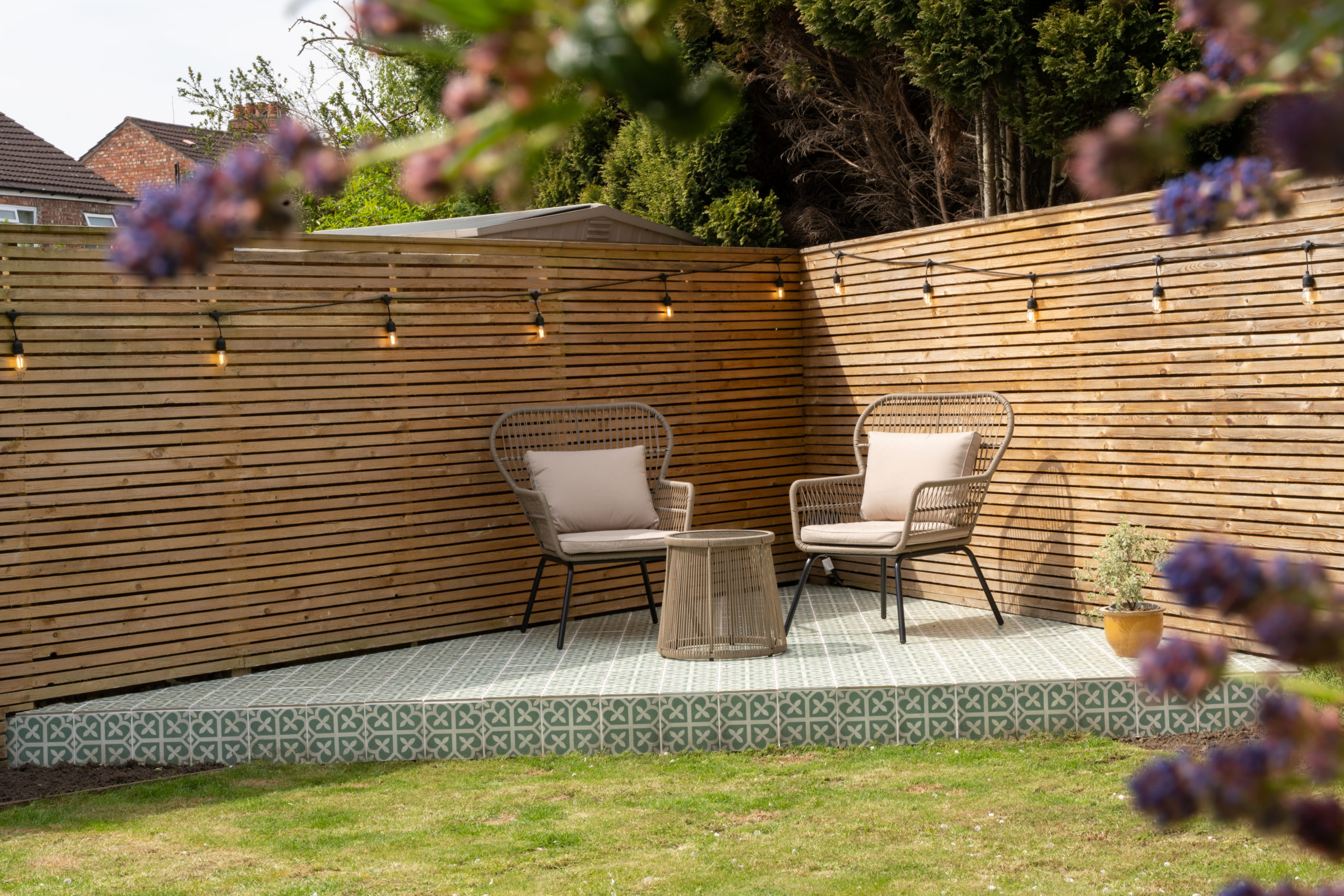How to light your garden for the best effect..
Just like your living room, you should look at your garden as a space you can use long after the sun has set, but to do this you need to light it up. And (just like your living room} not with one big light in the middle that flatters nothing and nobody.
Planning a garden lighting scheme follows, essentially, the same approach as planning your living room lighting scheme, you need to consider three aspects and, when you get these right, your garden will look amazing.
What are the three aspects of a great lighting plan? Task, Accent and Ambient. In your garden you can add another aspect of course – Energy Supply: solar, battery or mains.
Task lighting
Task lighting is almost purely functional. Think security lighting or lighting placed to light a cooking or cooking prep area, or to ensure diners can actually see what they’re eating. This doesn’t mean it need be unattractive, of course. For cooking and prep zones, choose lighting that shines brightly directly down onto the area where knives or hot items are in play. For dining, something more diffuse but still directly above the dining area works really well. It’s likely that in a dedicated cooking area you will have close-by access to your home’s electricity supply, so track down an electrician and have wiring and plug sockets run outside, too. It’s a minor expense you will never regret,
For lighting over your dining area, consider an overhanging floor lamp, or even an umbrella from which you can suspend battery-powered storm lanterns – you can actually find small, classically shaped ones in camping stores, they’re very low cost and their portability makes them ideal for table top lighting too.
If it’s just not possible to have a structure over your table, battery-powered LED string lights can look marvellous when twisted around a set of candles (again, LED candles can look great, or choose tall church candles in three different sizes for a very pretty centrepiece)
Accent lighting
Accent lighting should be used to uplight trees, or garden sculptures, ponds or rose arches, for example. Remember, at night a little bit of light goes a long way so choose your accent points carefully and keep them to a minimum. In a more bijoux garden, solar power is likely to be sufficient to light small trees and features sufficiently well for you and your guests to enjoy them from your patio. In a more extensive plot, running power to spotlights in your chosen corners will pay dividends. In this case, take care when choosing the bulb wattage – you neither want planes landing or your neighbours in a tizz. Warm lighting, rather than bold clear white light, is also far more aesthetically pleasing.
Ambient lighting
Ambient lighting is the overall glow you create in any space that sets the scene for the occasion. In a living room, you might add table lamps to dull corners, or a floor lamp to cast a slightly wider glow. In your garden, ambient lighting connects the parts of your garden you want to see. Consider solar powered festoon lighting – strings of bulbs, or fairy lights, draped between trees or just below the top of a fence. These won’t glow so bright they’re a distraction, but will cast a soft halo around your periphery, creating a warm and welcoming atmosphere. Solar or battery-powered lights work well for this, but a word of warning – bring them inside at the end of the summer rather than leave them out year-round. Most simply aren’t robust enough to cope with the wet and cold of winter.
Solar powered, or main electric, path lights are also marvellous for creating ambience. Dot stake lights along a path, or scatter them through your borders and create a magical ambience. You can find them in every shape and style, from glowing mushrooms to daisy lights to faux candles to super-stylish chrome and glass.
Once your garden is lit, take time to play around, moving accent lights or ambient lighting to get the best effect.
Eddie – Friday 4th August 2023 (Image used from Cromwell Road, Stretford).



